Featured
- Reset filters
- 48 results
- (-) Urban Energy
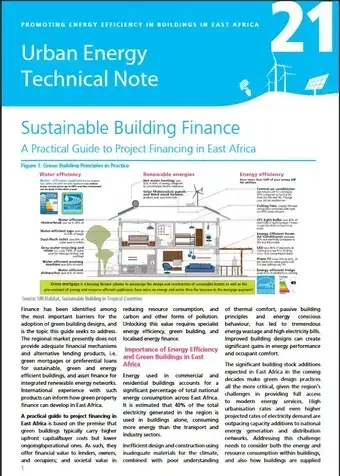
Brief
Urban Energy Technical Note 21: Sustainable Building Finance
2015
Finance has been identified among the most important barriers for the adoption of green building designs, and is the topic this guide seeks to address. The regional market presently does not provide adequate financial mechanisms and alternative lending products, i.e. green mortgages or preferential loans for sustainable, green and energy efficient buildings, and asset finance for integrated renewable energy networks. International experience with such products can inform how green property…
Read now
Learn more
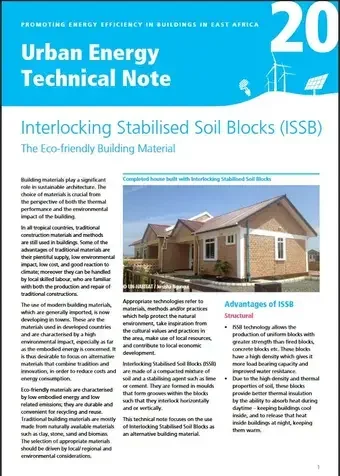
Brief
Urban Energy Technical Note 20: Interlocking Stabilised Soil Blocks (ISSB)
2015
Building materials play a significant role in sustainable architecture. The choice of materials is crucial from the perspective of both the thermal performance and the environmental impact of the building.
Read now
Learn more
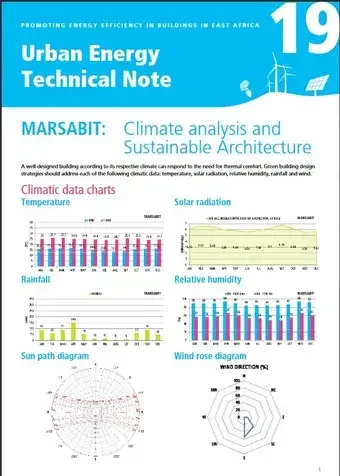
Brief
Urban Energy Technical Note 19: MARSABIT: Climate analysis and Sustainable Architecture
2015
A well-designed building according to its respective climate can respond to the need for thermal comfort. Green building design strategies should address each of the following climatic data: temperature, solar radiation, relative humidity, rainfall and wind.
Read now
Learn more
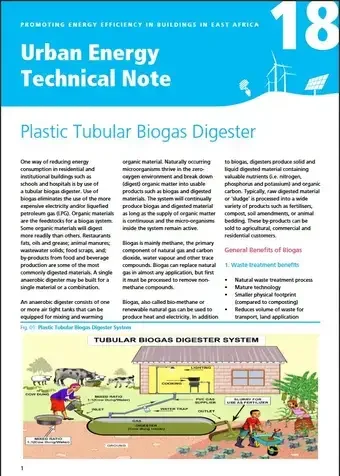
Brief
Urban Energy Technical Note 18: Plastic Tubular Biogas Digester
2015
One way of reducing energy consumption in residential and institutional buildings such as schools and hospitals is by use of a tubular biogas digester. Use of biogas eliminates the use of the more expensive electricity and/or liquefied petroleum gas (LPG). Organic materials are the feedstocks for a biogas system. Some organic materials will digest more readily than others. Restaurants fats, oils and grease; animal manures; wastewater solids; food scraps, and; by-products from food and beverage…
Read now
Learn more
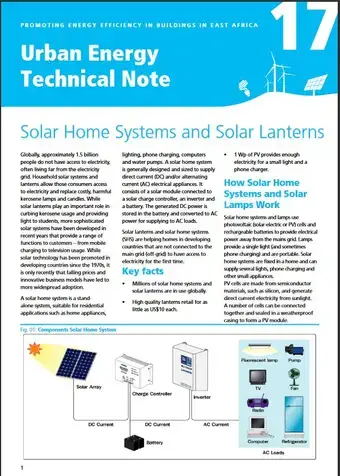
Brief
Urban Energy Technical Note 17: Solar Home Systems and Solar Lanterns
2015
Globally, approximately 1.5 billion people do not have access to electricity, often living far from the electricity grid. Household solar systems and lanterns allow those consumers access to electricity and replace costly, harmful kerosene lamps and candles. While solar lanterns play an important role in curbing kerosene usage and providing light to students, more sophisticated solar systems have been developed in recent years that provide a range of functions to customers – from mobile…
Read now
Learn more
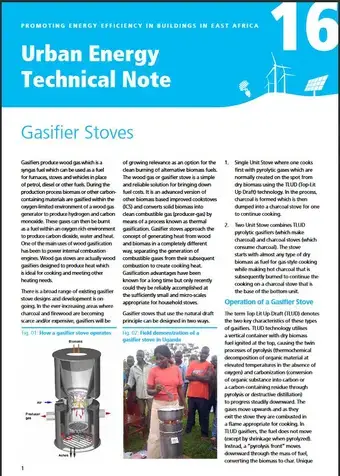
Brief
Urban Energy Technical Note 16: Gasifier Stoves
2015
Gasifiers produce wood gas which is a syngas fuel which can be used as a fuel for furnaces, stoves and vehicles in place of petrol, diesel or other fuels. During the production process biomass or other carbon-containing materials are gasified within the oxygen-limited environment of a wood gas generator to produce hydrogen and carbon monoxide. These gases can then be burnt as a fuel within an oxygen rich environment to produce carbon dioxide, water and heat. One of the main uses of wood…
Read now
Learn more
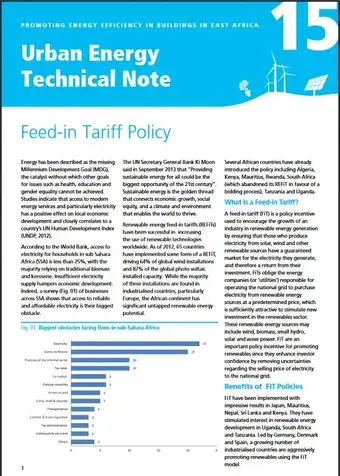
Brief
Urban Energy Technical Note 15: Feed-in Tariff Policy
2015
Energy has been described as the missing Millennium Development Goal (MDG), the catalyst without which other goals for issues such as health, education and gender equality cannot be achieved. Studies indicate that access to modern energy services and particularly electricity has a positive effect on local economic development and closely correlates to a country’s UN Human Development Index (UNDP, 2012).
Read now
Learn more
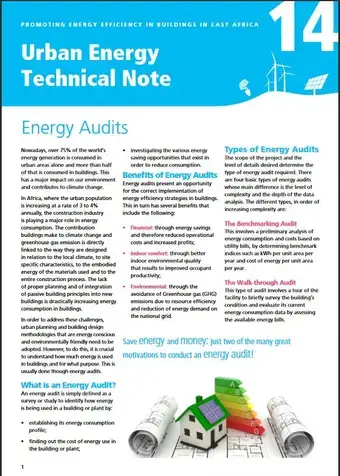
Brief
Urban Energy Technical Note 14: Energy Audits
2015
Nowadays, over 75% of the world’s energy generation is consumed in urban areas alone and more than half of that is consumed in buildings. This has a major impact on our environment and contributes to climate change.
Read now
Learn more
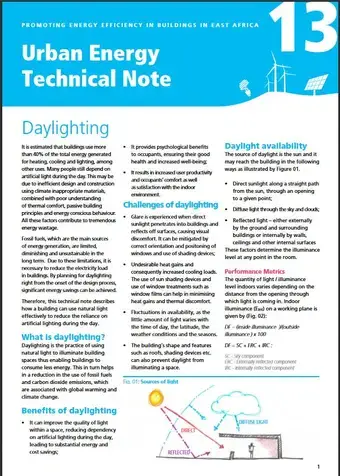
Brief
Urban Energy Technical Note 13: Daylighting
2015
It is estimated that buildings use more than 40% of the total energy generated for heating, cooling and lighting, among other uses. Many people still depend on artificial light during the day. This may be due to inefficient design and construction using climate inappropriate materials, combined with poor understanding of thermal comfort, passive building principles and energy conscious behaviour. All these factors contribute to tremendous energy wastage.
Read now
Learn more
Document
HSP/EB.2024/4- Report of the midterm review of the strategic plan of UN-Habitat for the period 2020–2025
发表于 四月 17th, 2024
Read now